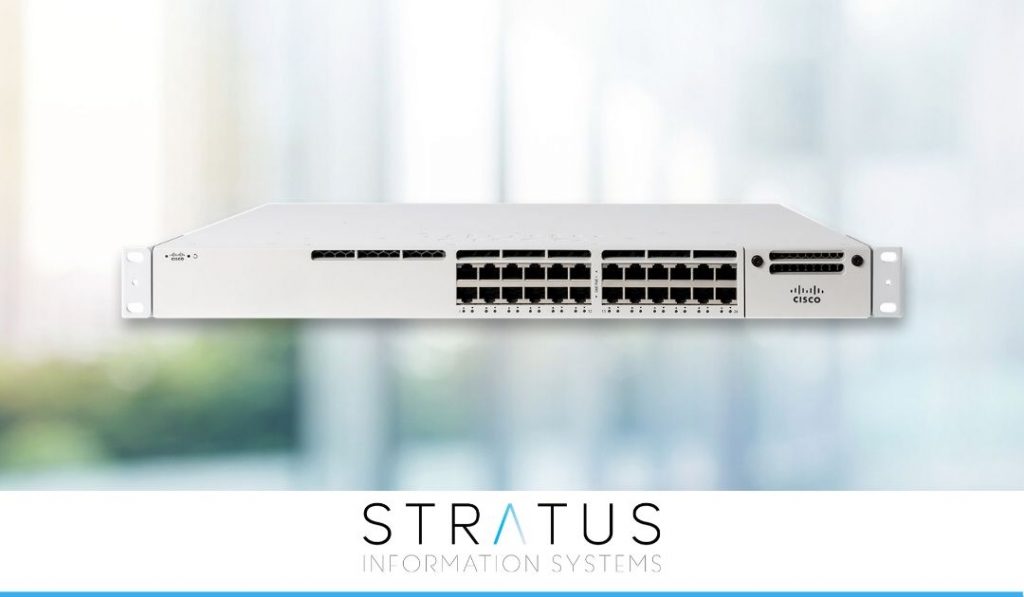
While network switches and routers are essential and similar-looking pieces of network equipment, they perform different functions. To further complicate matters, many network specialists use the terms interchangeably. Let’s clear up any misunderstandings.
Here are the differences between a network switch vs. a router.
| A Switch | A Router |
| Connects various devices together (e.g. computers, printers, and servers) within a local area network (LAN). | Creates and maintains a local area network (LAN) by connecting multiple devices, including switches. |
| Facilitates the sharing of information between connected devices | Helps handle multiple networks |
| Connects to a router, which allows devices to connect to the internet | Allows networked devices and their users to access the internet directly |
| Directs traffic over more complicated routes | Decides device priority and directs traffic by choosing the most efficient route for data packets to travel across a network |
| Does not include firewall functionality | Protects transferred information from security threats with its included basic firewalls |
| Operates at layer two of the OSI model | Operates at Layer 3 of the OSI model |
| Stores MAC addresses in the lookup table | Stores IP addresses in the routing table |
| Has one broadcast domain (except VLAN implemented) | Has a broadcast domain for every port |
| Works only on wired network connections | Works with both wired and wireless network connections |
| Does not offer NAT, NetFlow, and QoS Services | Offers NAT, NetFlow, and QoS Services |
| Is faster in a LAN environment | Is faster in MAN/WAN network environments |
| Is in Full Duplex | Is in Less Duplex |
| Limits speed to 10/100 Mbps | Limits speed to 1–10 Mbps for wireless and 100 Mbps for wired |
To learn more about router and switch differences, keep reading:
A switch (also called an ethernet switch) makes it possible for all of your devices to connect and communicate within your network. That includes your computers, printers, IP phones, point-of-sale registers, servers, and more—any devices that need to operate within your local area network (LAN).
If you’ve ever opened a document on your computer and then printed it on a printer located at the other end of the office, you have benefited from having an ethernet switch.
A router uses switches to create a high-performance LAN in which connected devices can access the internet or other networks. A router prioritizes devices and users, and efficiently directs traffic accordingly. It’s essential for maintaining seamless and quick network service.
A switch works by acting like a subway station for your internal network, transferring packets of data from one device to another.
Switches build a network within a layered architecture. The first layer, known as the “edge layer,” provides connectivity for all your devices. For smaller businesses, this layer of “routing switches” connects directly to your router, which in turn connects your business to the internet. Simply put, you cannot build a network for your business without switches.
For larger businesses, these switches connect to aggregation switches, which enable your network to scale.
There are two kinds of switches, unmanaged and managed.
A router allows the devices on your internal network to connect to the internet and to each other. It connects the small network (made up by one switch) to other networks, expanding the network’s coverage and capacity. A router also decides which devices have priority on your network, and which switches the information will travel through on its journey from Point A to Point B.
If a switch is a subway station, then a router works like the terminal at Times Square where multiple subway lines converge and passengers can enter or exit the system as well as transfer between lines.
When it comes to deciding if your business needs a switch or a router for connecting to and communicating within your network, which one does your business need—router vs. switch?
It can be confusing—which makes it difficult for many business owners to determine which device is right for their location—but the decision is actually nonexistent. Why? Because most of the time you don’t need to choose one or the other.
Most businesses are heavily dependent on the internet to conduct daily business. So many business functions require being connected to the internet via a router, such as:
However, businesses who have their own LAN also need at least one switch to connect all the devices and users together so information can freely flow from one to another.
In other words, smaller businesses without their own internal computer network can get by with just a router. Otherwise, businesses need both a router and at least one switch.
Ready to talk to someone? Schedule a call with a Stratus consultant who will help you find the right Cisco Meraki switch or router solution for your organization.

Stay informed about our newest releases and updates